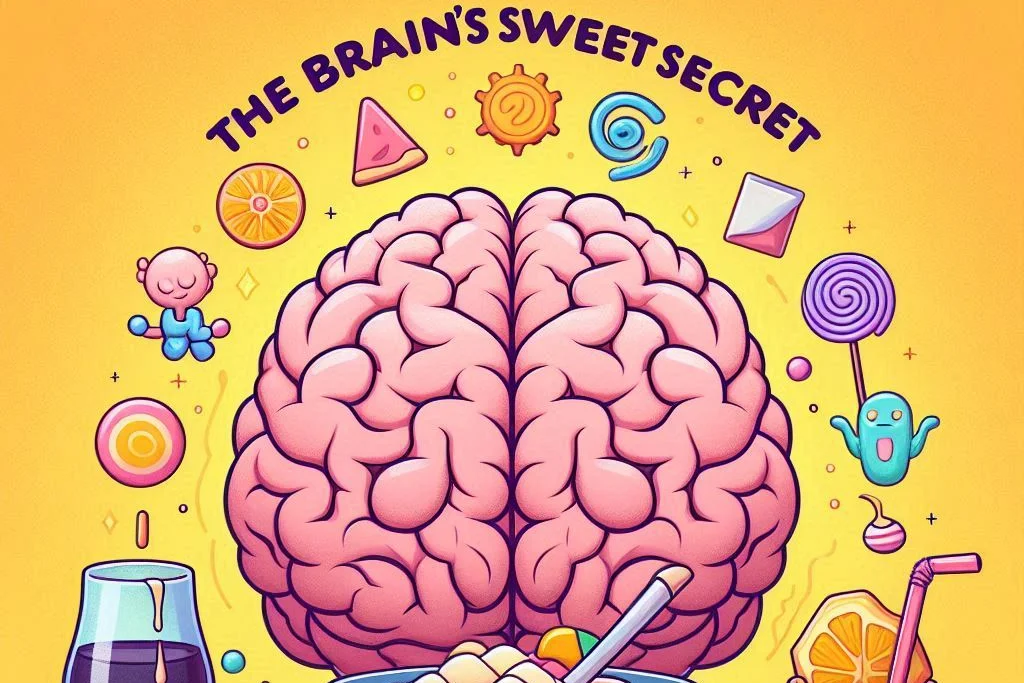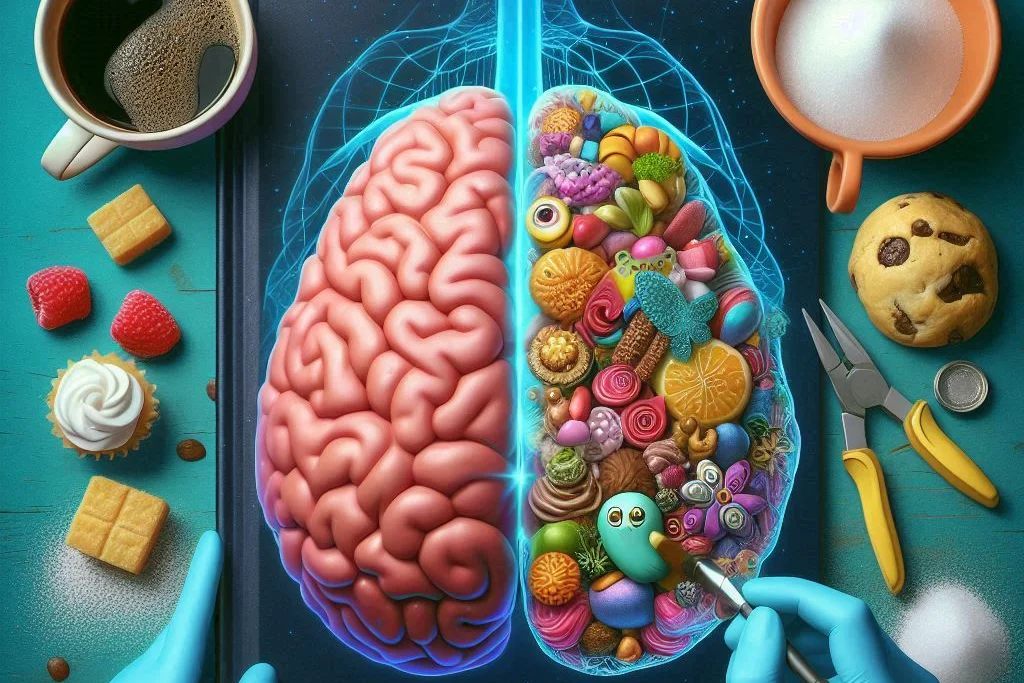Unlocking the Mystery: The Brain’s Sweet Secret
Ever wonder why sugar cravings persist even when full? Uncover the science behind this phenomenon and explore the brain mechanisms now!

research has revealed that brain activity controls the desire for dessert, even when the body is full. The same brain cells responsible for signaling satiety after a meal also activate cravings for sugary treats, according to a study published in Science. This discovery points to a specific brain circuit that drives a desire for sugar, even when additional calories are not needed.
Many have experienced the sensation of feeling full after a meal yet still longing for dessert. Researchers sought to understand the biological reasons behind this “dessert stomach” phenomenon. Previous studies had suggested that brain pathways linked to reward influence food choices, but the specific mechanisms behind sugar cravings following satiety were not well understood.
“It was previously unknown which mechanisms drive the specific appetite for high-sugar foods, particularly in states of satiety, which would explain why dessert is often consumed,” explained Henning Fenselau, an independent research group leader at the Max Planck Institute for Metabolism Research.
Henning Fenselau
To investigate this, experiments were conducted, primarily involving mice. A “dessert” scenario was created, where the mice were fasted overnight and fed regular food for 90 minutes, mimicking a meal. Following this “meal,” the mice were offered either more regular food or a high-sugar diet for 30 minutes. This setup allowed researchers to observe sugar intake in the mice, even when they were already full, simulating the human experience of eating dessert after a meal. The amount of each food consumed during this “dessert period” was meticulously measured.

In order to understand the brain activity involved, scientists focused on specific brain cells known as pro-opiomelanocortin (POMC) neurons, which are located in the hypothalamus, a brain region responsible for regulating hunger and satiety. POMC neurons are recognized as key regulators of satiety, signaling when the body has consumed enough food and should stop eating. This is achieved through the release of signaling molecules, including alpha-melanocyte-stimulating hormone, which acts on other brain areas to suppress appetite and reduce food intake, helping to maintain stable body weight.
To explore this unexpected function, researchers employed advanced techniques to monitor and manipulate these neurons in mice. A “dessert” scenario was designed for the mice to replicate human eating habits. The mice were fasted overnight, then given access to regular food for 90 minutes to simulate a meal. Afterward, they were offered either more regular food or a high-sugar diet for 30 minutes, representing the “dessert period.” The amount of food consumed during this period revealed that even when full from the initial meal, the mice ate significantly more high-sugar food compared to regular food. This demonstrated that, similar to humans, a preference for sweet foods persists even in a state of fullness.
To further investigate the role of POMC neurons in driving this sugar preference, optogenetics and chemogenetics were utilized, enabling precise control over neuronal activity. Through optogenetics, POMC neurons in the mice were genetically modified to be activated or inhibited by light. In the case of chemogenetics, a drug was used to selectively activate or inhibit these neurons. When POMC neurons, or their projections to the paraventricular thalamus (PVT), were inhibited in sated mice, a significant reduction in the consumption of high-sugar food was observed during the dessert period. This finding suggested that the activity of POMC neurons, particularly their pathway to the PVT, is crucial for driving the appetite for sugar in a state of fullness.

To understand when and how POMC neurons become active, fiber photometry was used to measure the real-time activity of neurons in living mice. A tiny optical fiber was inserted into the PVT region of the brain, and a fluorescent sensor was employed to detect the activity of POMC neuron terminals – the parts of the neurons that release signaling molecules. This activity was monitored while the mice were presented with and consumed sugary food. The measurements showed a significant and rapid increase in the activity of POMC neuron terminals in the PVT, particularly when the mice had access to the high-sugar diet.
Interestingly, this increase in activity occurred not only during the consumption of sugar but also when cues predicting sugar were presented, such as a specific smell associated with the sweet treat. Additionally, even when the mice tasted sugar for the first time, the POMC-to-PVT pathway was activated. This suggests that this brain pathway is involved in both the anticipation and consumption of sugar, with the response to sugar being, at least in part, innate.
To explore whether activating the POMC-to-PVT pathway could create a preference for sugar, a conditioned flavor preference test combined with optogenetics was used. Mice were allowed to choose between two flavored diets, and the POMC-to-PVT pathway was activated whenever they ate the less preferred flavor. The results showed that activating this pathway while consuming a specific flavor was sufficient to make the mice develop a strong preference for that flavor, shifting their preference toward the initially less appealing option.
However, when tested for a general sense of reward or pleasure using place preference and real-time place preference tests, no evidence was found to suggest such an effect. This indicated that the POMC-to-PVT pathway is specifically involved in creating a preference for sugar-associated flavors rather than generating a general reward signal.
To investigate whether similar brain mechanisms are at play in humans, functional magnetic resonance imaging (fMRI) studies were conducted. The brains of human volunteers were scanned while consuming a sugary solution compared to water. The fMRI results revealed that, similar to the findings in mice, activity in the PVT region of the human brain decreased in response to sugar consumption. This supports the idea that the POMC-to-PVT pathway and its role in sugar appetite may be conserved across species, suggesting that the “dessert stomach” phenomenon may share similar underlying brain mechanisms in both mice and humans.

Finally, researchers sought to determine whether the POMC-to-PVT pathway is specific to sugar or if it also plays a role in the appetite for other palatable foods, such as fat. The activity of the POMC-to-PVT pathway was compared in mice when consuming either high-sugar or high-fat diets. While both diets increased activity in the pathway, the response to sugar was found to be significantly stronger than the response to fat.
Manipulation of the POMC-to-PVT pathway revealed that it specifically influenced sugar intake, with minimal impact on the consumption of high-fat foods. This suggests that the POMC-to-PVT pathway is particularly specialized in regulating the appetite for sugar, distinct from the mechanisms that drive appetite for other types of palatable foods, such as fat.
“Our data show that the brain’s principal regulator of satiety – POMC neurons – not only promote satiety signaling, but also switch on the specific appetite for sugar when the body has enough energy. They mediate this newly-identified function by releasing the endogenous opioid beta-endorphin.”
Henning Fenselau
Further research could investigate the long-term effects of chronic activation of this pathway through high-sugar diets and how it may contribute to the development of compulsive eating behaviors or metabolic disorders.
“We are interested to determine how our findings could be applied to combat obesity and excessive sugar consumption. There are already opioid receptor blockers (combined with other receptor antagonists) that are FDA-approved drugs for obesity treatment. We think that using and tailoring them more specifically could offer new insights on how to combat obesity, particularly in individuals who consume high levels of sugar.”
Henning Fenselau
https://doi.org/10.1126/science.adp1510
Summary
This study explores the neurobiological mechanisms behind the selective craving for sugar, even when full. The researchers discovered that hypothalamic pro-opiomelanocortin (POMC) neurons, known for regulating satiety, also play a crucial role in driving sugar appetite. POMC neurons promote satiety by reducing food intake but simultaneously activate sugar cravings through a specific opioid circuit involving projections to the paraventricular thalamus. This pathway was strongly activated during sugar consumption, particularly when the mice were already sated. The findings suggest that this opioid signaling pathway contributes to the overconsumption of sugar, as inhibiting it led to a reduction in high-sugar food intake in full mice.
